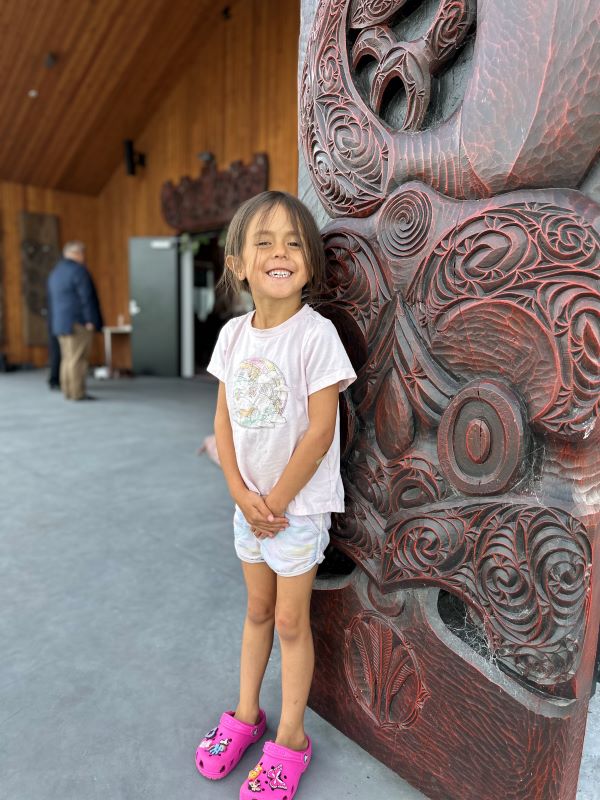
Toitū te marae, toitū te hapori - Building whānau resilience through physical and virtual marae

Building whānau resilience so that our mokopuna can stand proudly on their marae – Hinerākei Sciascia in front of Te Torokiki o te Rua o te Moko, Kānihi-Māwhitiwhiti Pā, Ōkaiawa Taranaki (photo supplied).
Extreme weather events and impacts of climate change will continue to be felt across the globe having adverse effects on Indigenous populations who already grapple with the impacts of colonisation, land confiscation, occupation, racism, and discrimination. For whānau, hapū and iwi, the threat of climate change on our spiritual connection to whenua, wai and taonga is significant. It is a threat to our cultural and spiritual wellbeing that will increasingly impact Māori communities as we become more vulnerable to future environmental events. Given the existing inequities that Māori communities are faced with, their preparedness, response and recovery to natural phenomena are disadvantaged. Their ability to adapt to climate change requires grounded, connected and reflective approaches. This is to ensure community wellbeing is prioritised and, through a marae-centred approach, whānau are prepared for future events and building resilience. This programme of research will explore both the physical and virtual marae as a key solution to building whānau resilience. With a focus on climate change adaptation, preparedness, response and recovery, exploration of our marae (both physical and virtual) and their varying roles will be investigated to better understand how physical and virtual marae are utilised during times of disaster and emergency to build whānau resilience.
